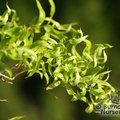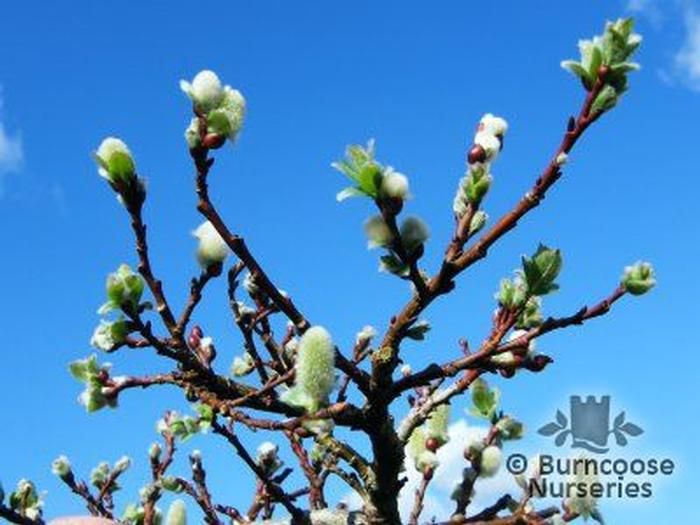- Shop Now
- Burncoose Specialities
- This Month
- Offers & Promotions
- RHS Chelsea Flower Show 2024
- 40 years at Burncoose
- Engage With Us
- Information, Help & Advice
- About Us & Our Services
- Terms & Conditions
- Log In / Register
SALIX
Commonly known as Willow
Very diverse of form and habit from dwarves suitable for troughs to huge weeping trees for planting near water, and some with brilliantly coloured winter shoots.
Embedded in culture for millenia. Coracles, cricket bats, wicker and medicine. Music and literature.
Genus of about 450 species of normally dioecious, deciduous trees and shrubs found in habitats ranging from lowland meadows and riverbanks to sand dunes and mountain screes worldwide, except Australia.
-
Deciduous
-
Dwarf shrubTypically only grows to a maximum of one or two feet in height but there will be some exceptions.
-
Medium shrubTypically grow to around 4-6 feet in height
-
Tall Shrub
-
Tree
-
Additional Features
 Good to knowGrown for habit (weeping), catkins, foliage and coloured winter shoots. Wildlife plant - insects, birds.
Good to knowGrown for habit (weeping), catkins, foliage and coloured winter shoots. Wildlife plant - insects, birds. Place of originWorldwide, except Australia
Place of originWorldwide, except Australia -
Wildlife
 Bee friendly
Bee friendly
- Introduction to salix
- Dwarf growing willows for the rockery or shrub border
- Taller growing ‘shrubby’ willows suitable for woodland or waterside planting
- Tree willows
- How to plant a tree - Video Tip ondemand_video
- How to plant a tree
- Ties - Video Tip ondemand_video
- Restaking fallen young trees - Video Tip ondemand_video
- Fallen old tree - Video Tip ondemand_video
- Clearing up fallen beech tree - Video Tip ondemand_video
- Spring pruning - Video Tip ondemand_video
- Removing side shoots - Video Tip ondemand_video
- Pruning and Shaping Magnolia - Video Tip ondemand_video
- Deer protection - Video Tip ondemand_video
- Weed Spraying - Video Tip ondemand_video
- Removing Ivy - Video Tip ondemand_video
- Removing wire protection - Video Tip ondemand_video
- Tree Survey - Video Tip ondemand_video
- Crown uplift - Video Tip ondemand_video
- Removing shoots below graft - Video Tip ondemand_video
- Removing peeling bark - Video Tip ondemand_video
- Maintaining variegation - Video Tip ondemand_video
Buy Varieties of SALIX

SALIX babylonica 'Tortuosa'
contorted stems and light-green leaves

SALIX caprea
female form is known as 'Pussy Willow'

SALIX caprea 'Kilmarnock'
top grafted weeping Kilmarnock willow

SALIX cinerea
grey underside to the leaves

SALIX daphnoides
large silver catkins, dark stems with glossy red shoots


SALIX fargesii
stout branches with glossy-green new growth which turns reddish-brown. Buds are bright red. Long catkins are green in spring. A good ornamental shrub right through the year with dark green toothed leaves silky underneath

SALIX gracilistyla 'Mt. Aso'
striking male plant with beautiful silky pinkish-red catkins


SALIX hastata 'Wehrhahnii'
semi-dwarf willow with grey foliage. Catkins start white and turn yellow


SALIX helvetica
silver grey catkins appear from small golden buds before the leaves

SALIX magnifica
magnolia-like leaves. Upright catkins are reddish at first fading to yellow. A most impressive species as a freestanding plant

SALIX moupinensis
similar to S.fargesii but with smaller leaves. An attractive ornamental shrub all year round


SALIX purpurea 'Nancy Saunders'
female form with slender glossy red shoots and blue-green leaves

SALIX udensis 'Golden Sunshine'
bright yellow-green leaves. Insignificant catkins

SALIX udensis 'Sekka'
Japanese willow with flattened stems, ideal for flower arranging


SALIX x sepulcralis 'Erythroflexuosa'
vigorous contorted orangey yellow stems and green leaves
Useful extras...













 Gift-wrapping available
Gift-wrapping available




